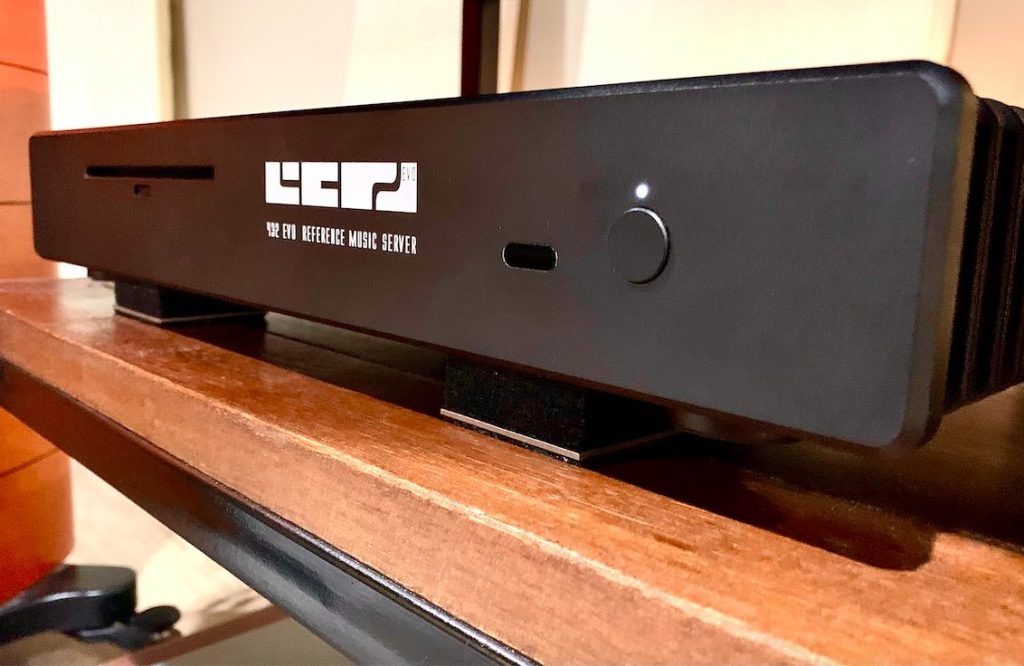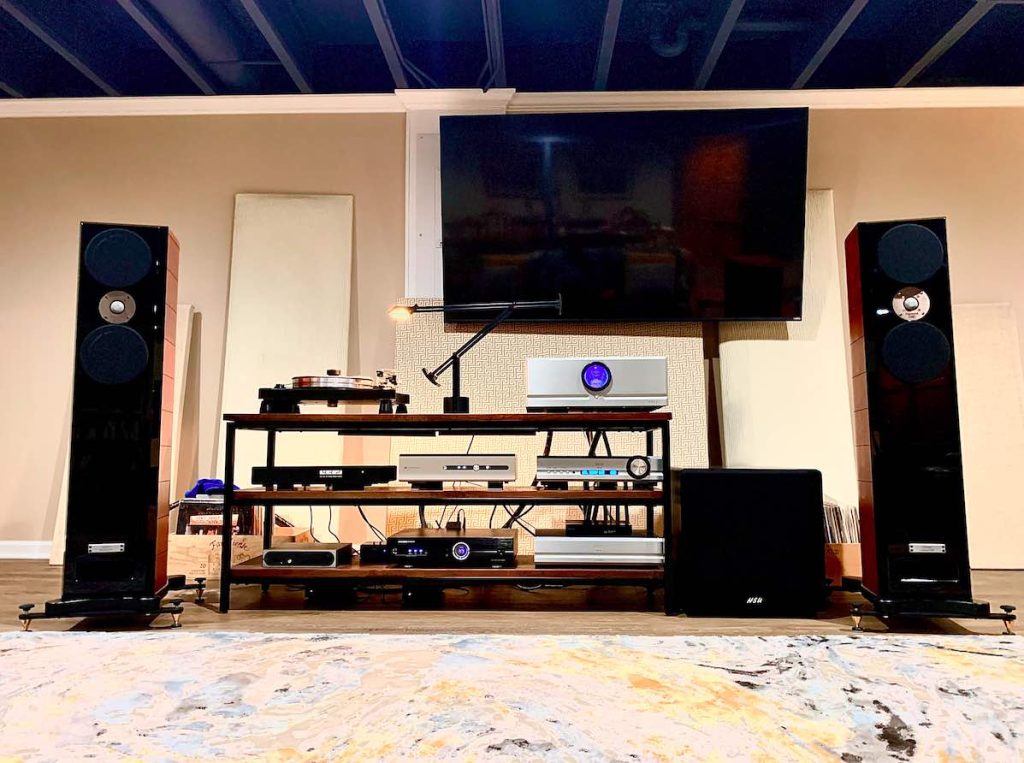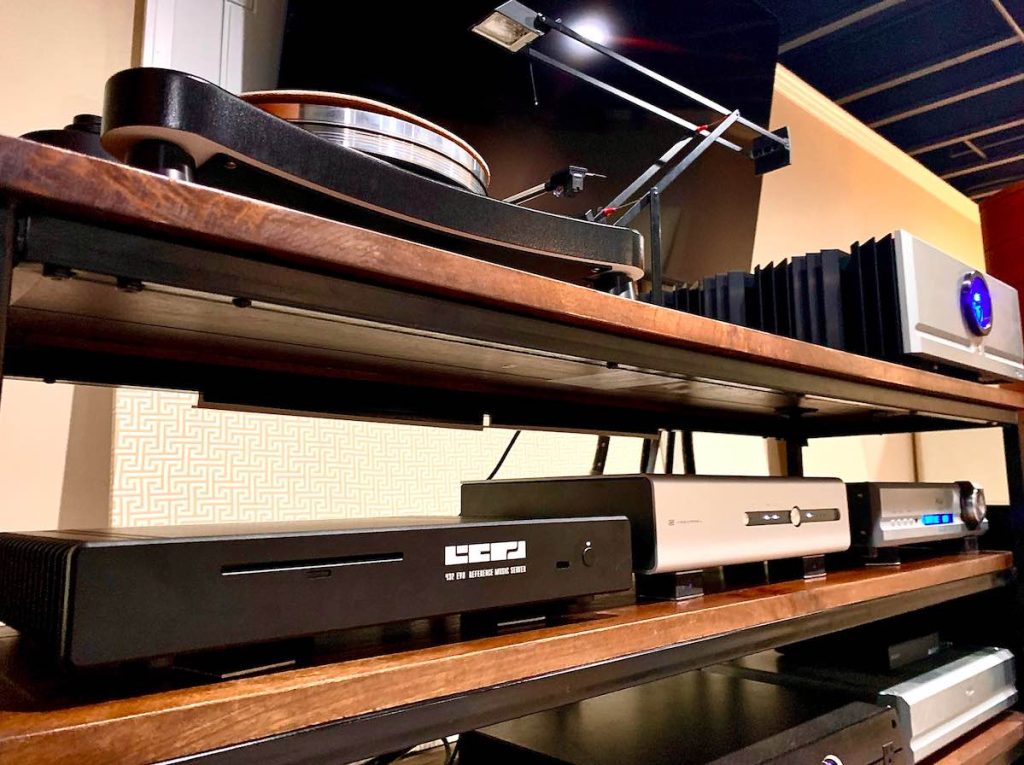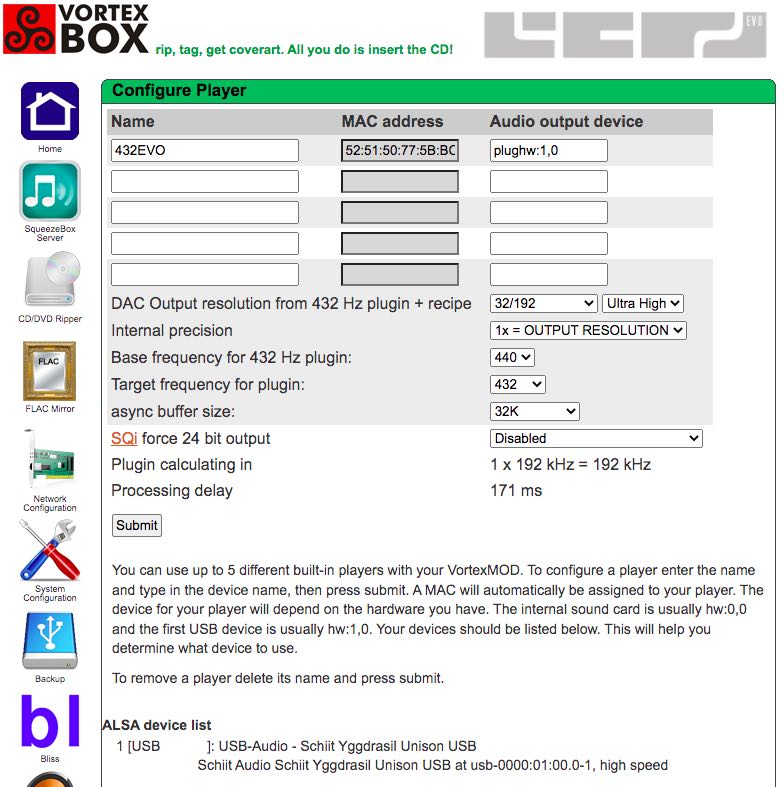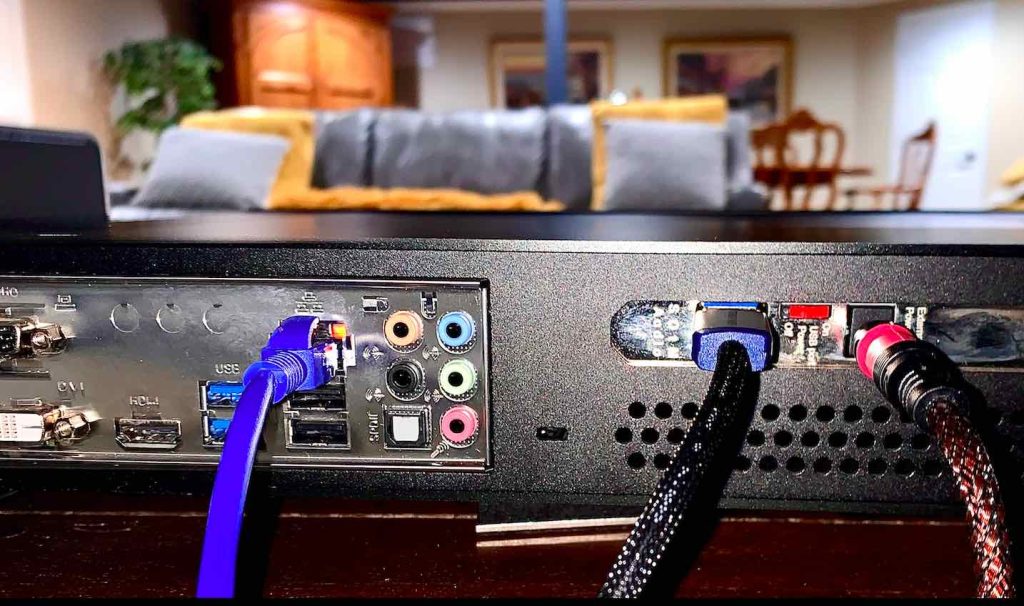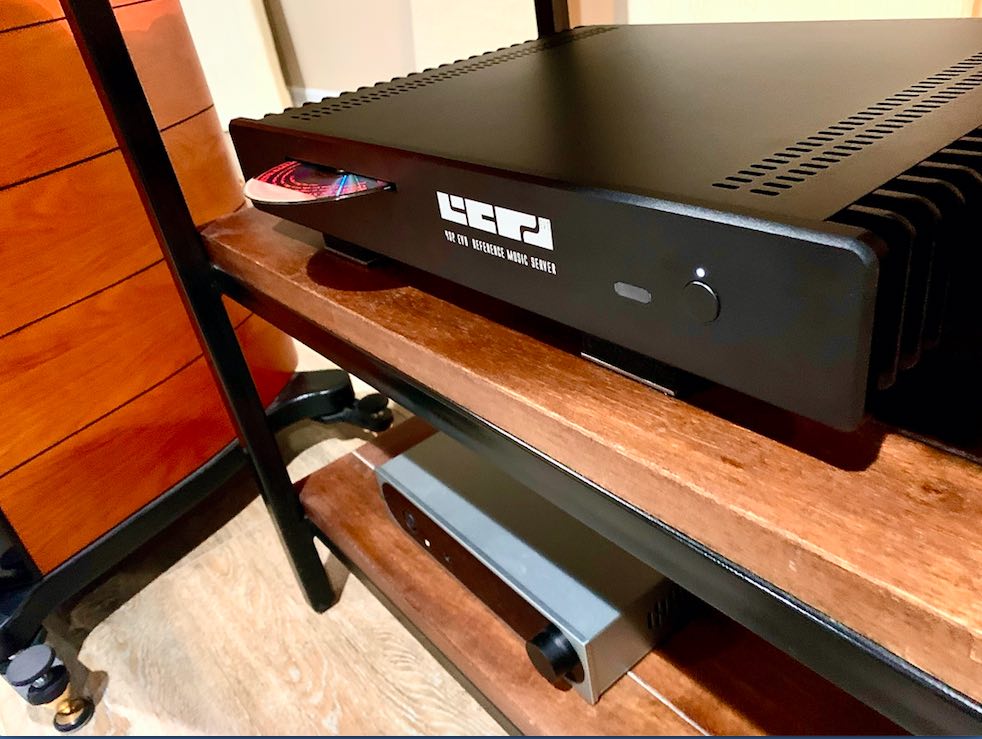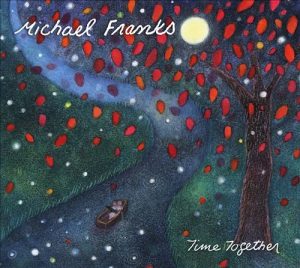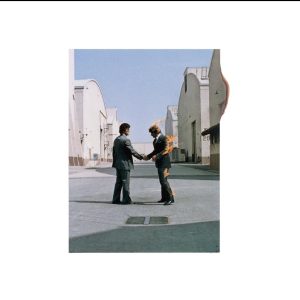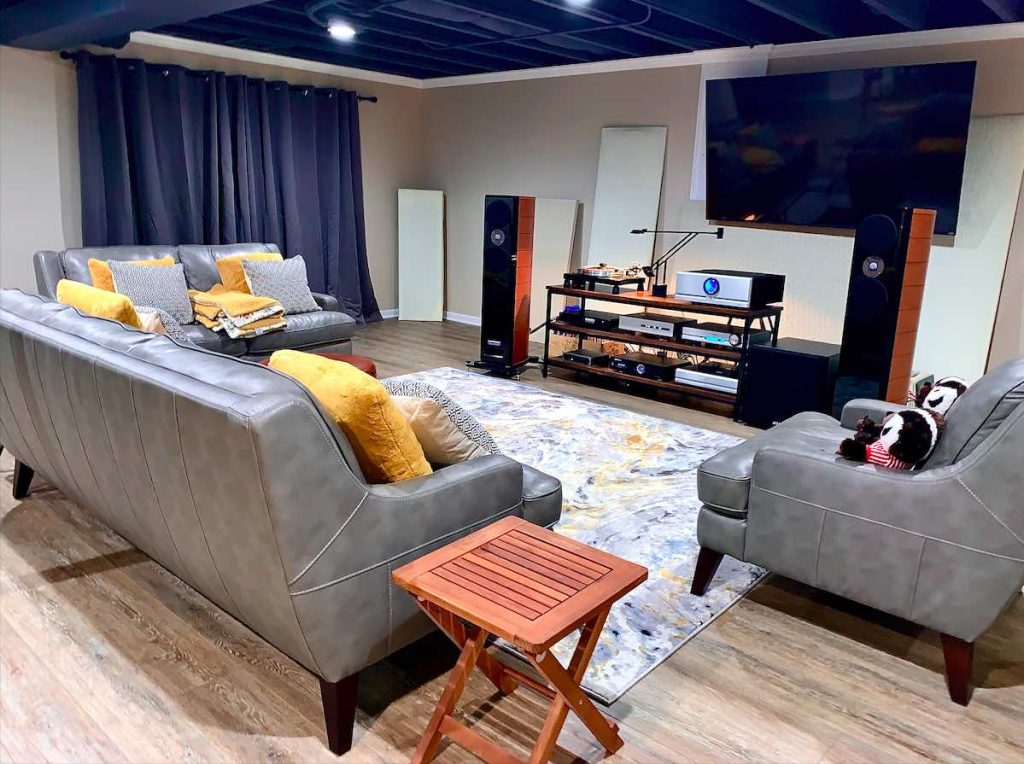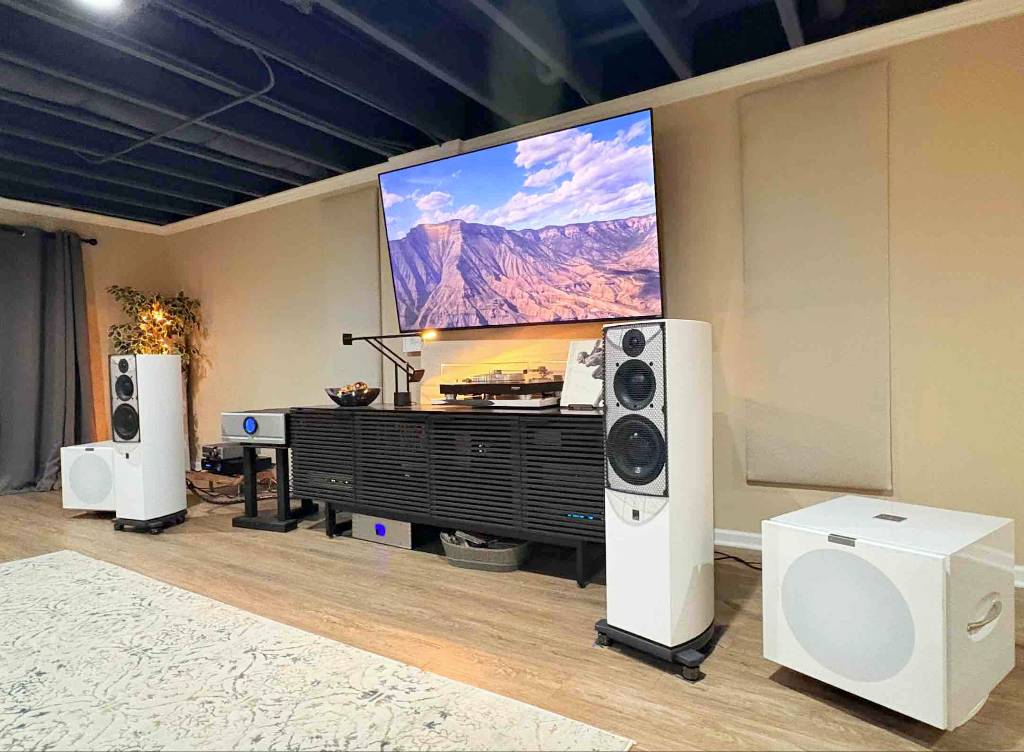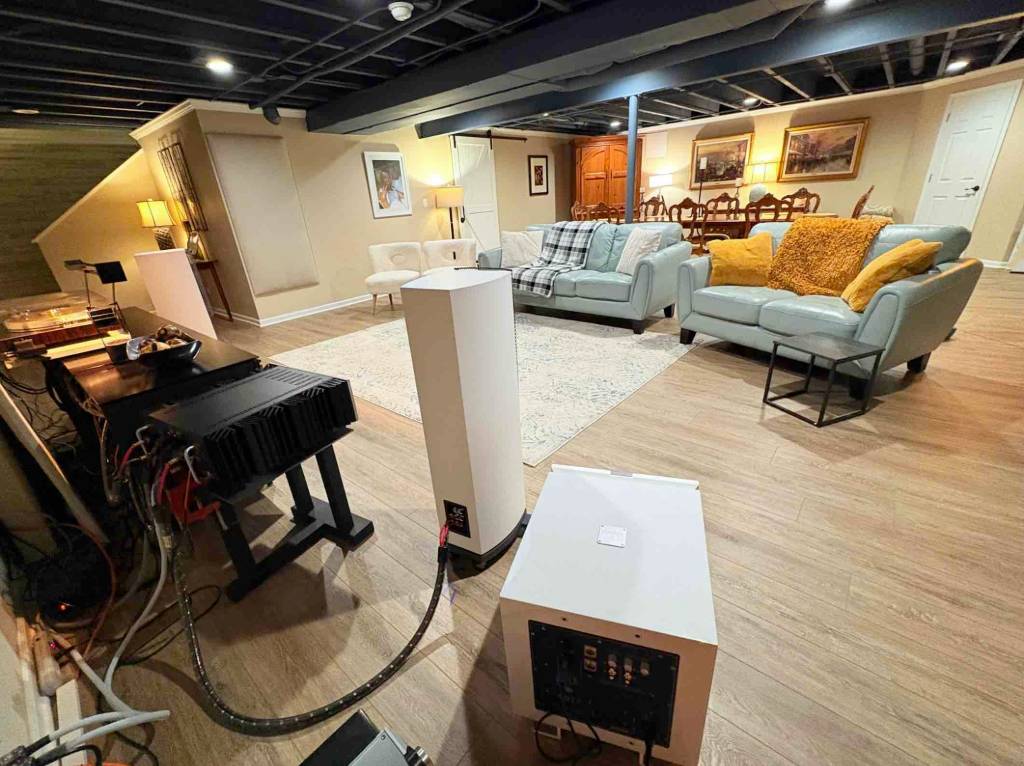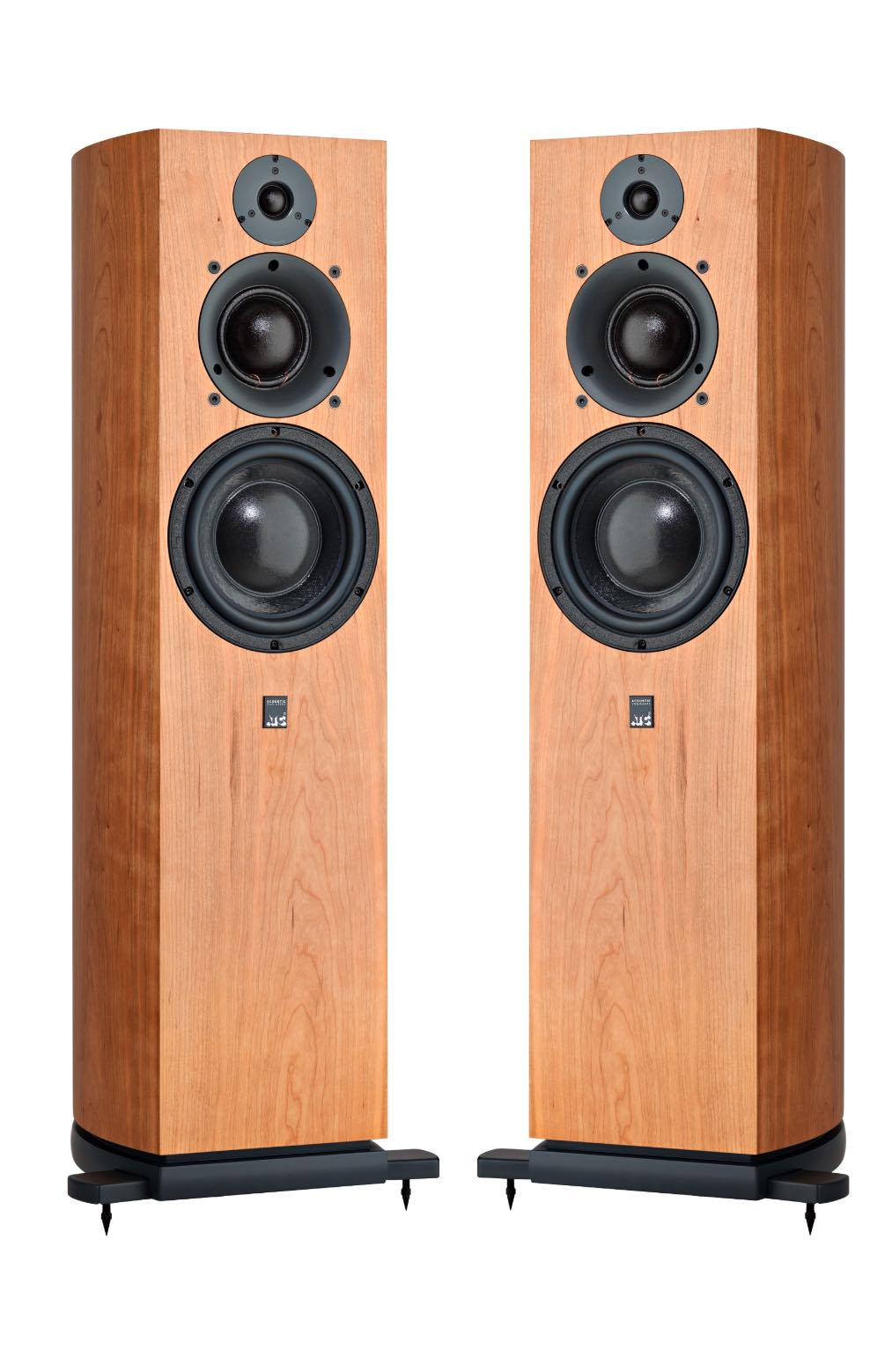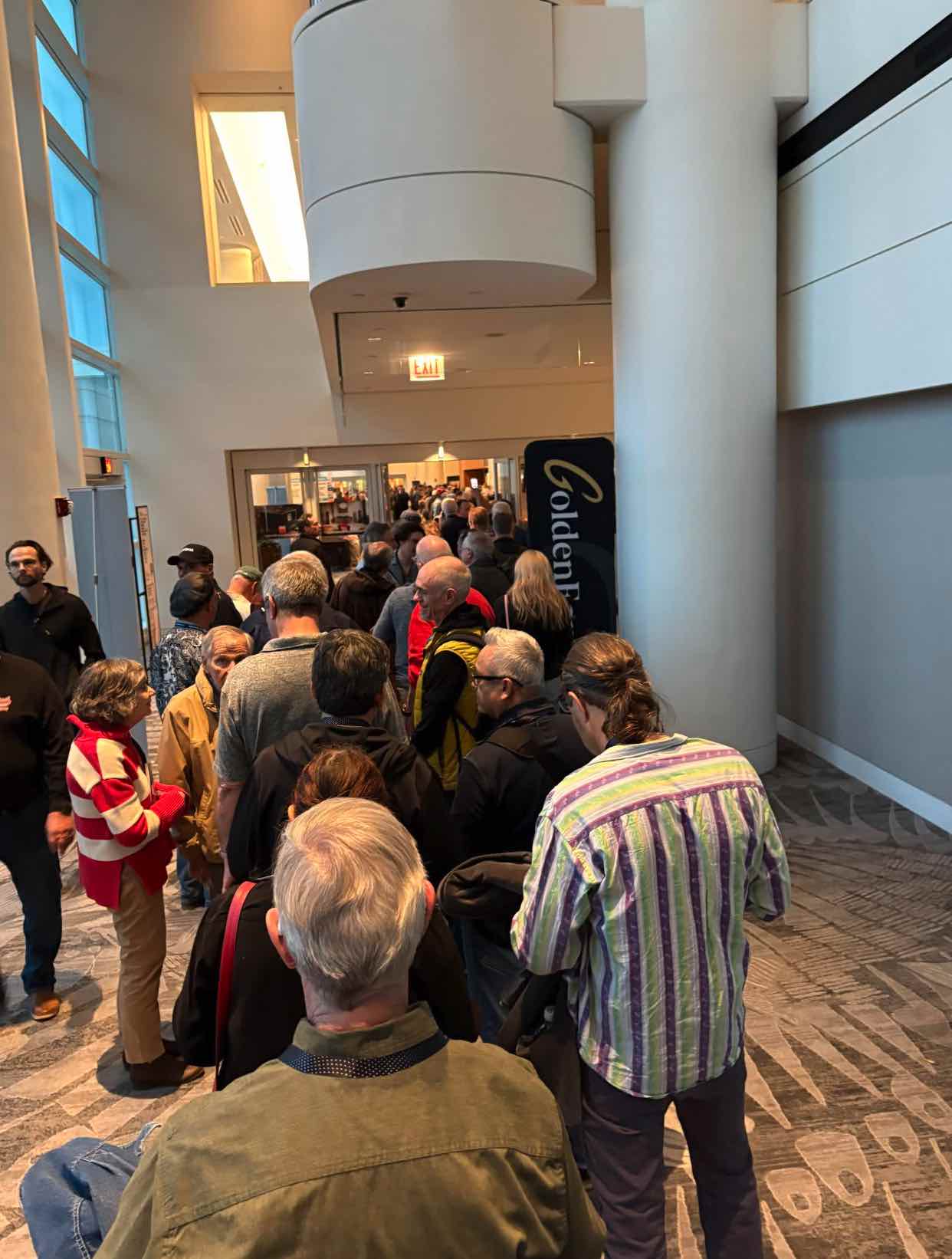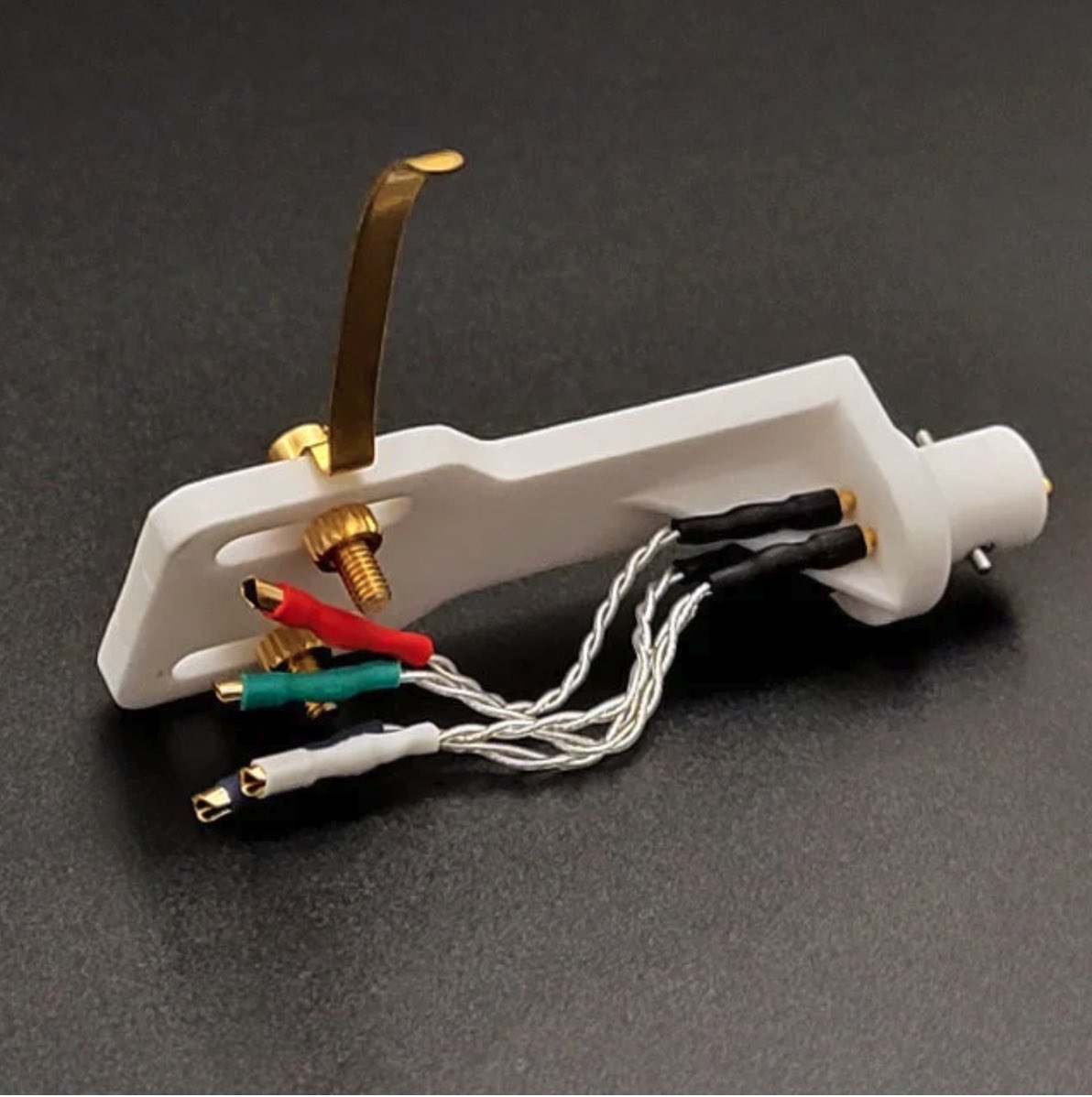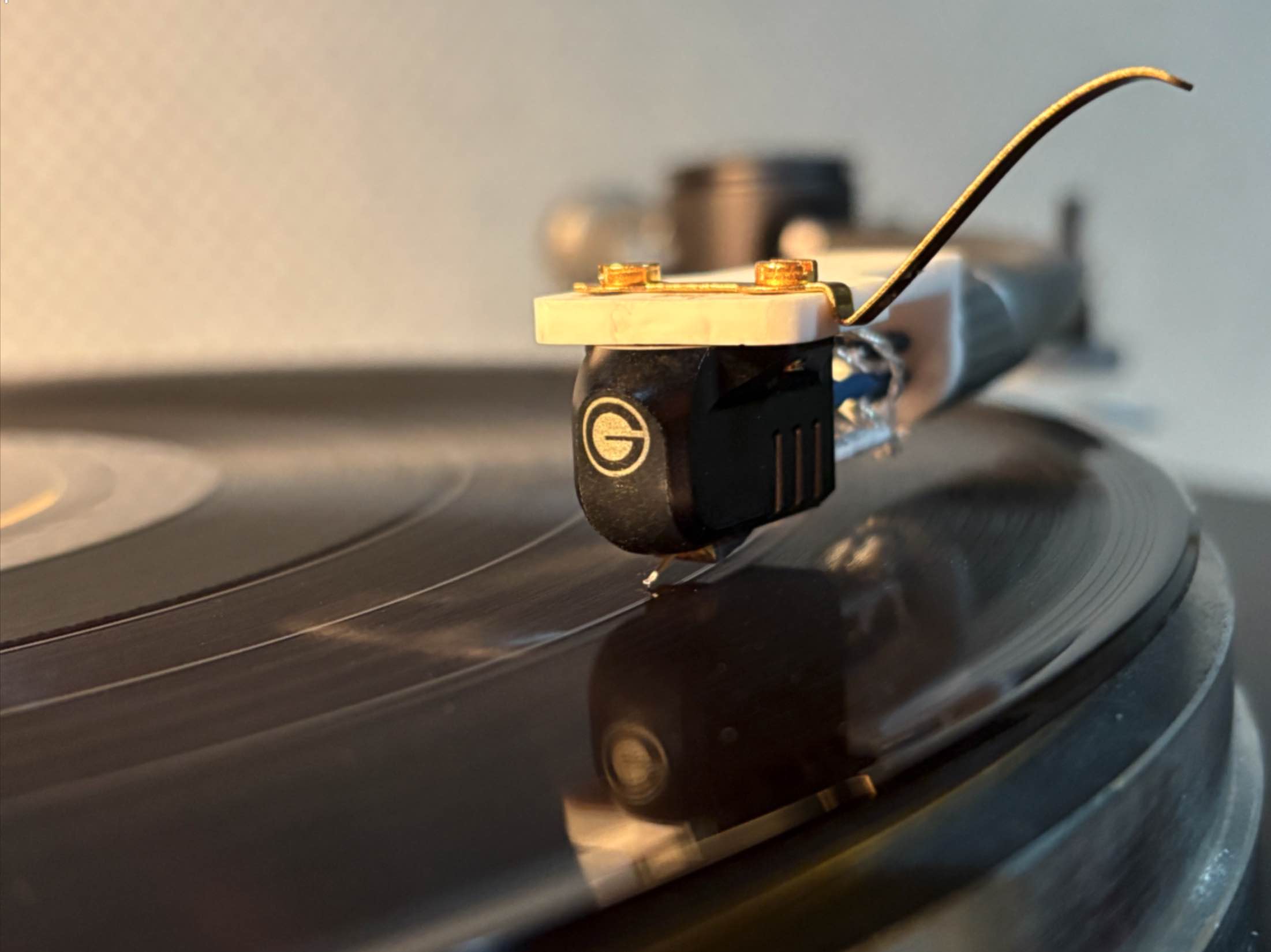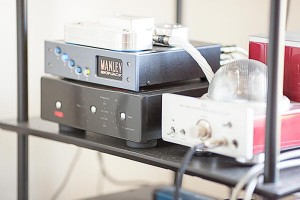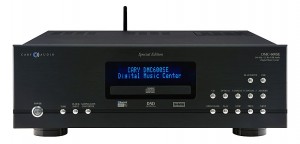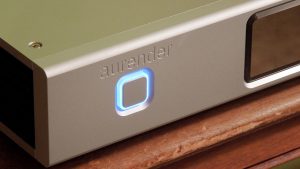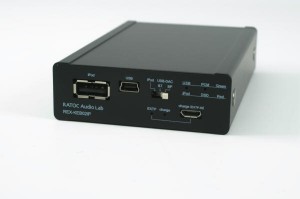Somewhere off shore, just west of Pillar Point Harbor in northern California, the 432 EVO High-End reference music server is riding a mammoth wave at Mavericks Beach. Championing the superiority of 432 Hz tuned music, via connection with the rhythms of Mother Earth, over today's 440 Hz standard, the surging swell is gaining momentum.
Nix Mavericks Beach—make that the world of music. Frankly, the sentiments undergirding this watery wall sounded to me about as whacked as Euell Gibbons, the eccentric naturalist and Grape-Nuts cereal spokesman.
Gibbons famously asked in the cereal's 1970s commercials, "ever eat a pine tree?"
Some years ago, a horn speaker artisan spoke effusively about how the ancients used to tune their instruments at 432 Hz. He waxed on about how it produced a sublime, organic sound, in tune with nature leading to peacefulness and tranquility. While today's 440 Hz standard, in comparison was very harsh, contributing to the chaos that we see all around us in modern society.
Then, during my recent interview of digital audio icon Mike Moffat, he mentioned the pleasant musical effects of playing music tuned to 432 Hz on one of Schiit Audio's experimental gizmos (you can read that HERE).
"There's a certain point of the key—most musicians use a key of A 440—and then there's a key you hear about sometimes where A equals to 432, which is much closer to C equals 256," Moffat said, "Which is sort of the natural center where it's a certain pitch where all of the harmonics perfectly align up, and it has a different kind of sound when C equals 256."
That prompted me to give the 432 EVO a closer look.
440 Who?
It's a given that in order for instruments to sound right when playing together, they should play the same tone when hitting the same musical note. The modern tuning standard for music for the note, A4, is 440 Hz, or 440 vibrations per second, as in a violin's string. (jakubmarian.com)
There have been various arguments that 432 Hz is superior to 440 Hz based on nature, mathematics, and religion.
The ancient philosopher and mathematician, Pythagoras, allegedly developed the Pythagorean tuning system. Based on the ratio of 3:2 to form perfect fifth harmonies, it fed into the concept of Pythagorean temperament,
According to Ethan Keely, "a 12-tone system based on a stack of perfect fifths. In this system, when D is tuned at 288 Hz, the note A (the perfect fifth of D) must amount to 432 Hz because it is 3/2 (or 1.5) times the frequency of D (288 Hz x 1.5 = 432 Hz). Herein lies an early mathematical argument in favor of A4= 432 Hz." (emastered.com).
In 1885, the music commission of the Italian government decreed that all orchestras and instruments should use a tuning fork which vibrated at 440 Hz, which was different from the original standard of 435 Hz and the 432 Hz standard used in France. Fast forward to 1917: the American Federation of Musicians gave their endorsement to the Italians, and a further push for 440 Hz in the 1940s ensued. Then, in 1953, a worldwide agreement that 440 Hz would be the universal standard was signed. (Global News)
Radio broadcaster and music reviewer Alan Cross offers some interesting insights in his fascinating commentary, "The Great 440Hz Conspiracy, and Why All of Our Music is Wrong." Stating that the Rockefeller Foundation had nefarious interests in pushing it through, he cited the following quote:
"The monopolization of the music industry features this imposed frequency that is 'herding' populations into greater aggression, psychosocial agitation, and emotional distress predisposing people to physical illnesses and financial impositions profiting the agents, agencies, and companies engaged in the monopoly."
Similarly, Jakub Marian wrote the following in his article, The '432 Hz vs. 440Hz' Conspiracy Theory, "presumably, the 432 Hz tuning is some way tuned to the vibrations of nature itself, whereas the 440 Hz tuning was introduced by Joseph Goebbels, the Nazi minister of propaganda. Yes, that's right. There are millions of people in the world who believe that Goebbels introduced the tuning to make people feel more anxious." (jakubmarian.com)
Conspiracy theories aside, Cross suggests that music tuned to 440Hz works on the third eye chakra (regulating "thinking") while 432 Hz stimulates the heart chakra ("feeling"), thus 432 Hz music boosts spiritual development in the listener and may also provide healing properties. But, he says that there is a major movement afoot to universally switch back to 432 Hz, however, the gargantuan costs to worldwide standards, as well as reconstruction and retro-tuning of millions of music instruments would prove cost prohibitive (you can read his article HERE).
Survey Says
Interestingly enough, four scientific studies conducted in Italy from 2016 to 2020 suggest that health benefits may result from listening to music tuned to 432 Hz. These studies compared the outcomes of 432 Hz and 440 Hz interventions for various purposes:
- A study that recorded the impact that 432 Hz music had on anxiety during endodontic treatment
- An experiment that studied the effect of music frequencies on rats weight gain in 2017
- A double blind pilot study in 2019 recorded how 440 Hz and 432 Hz music impacted parameters such as blood pressure, respiratory rate, oxygen saturation and other values in 2019
- A study examined the impact of 440 Hz vs. 432 Hz music on the quality of sleep of patients with spinal cord injuries in 2020
The results of the 2016, 2019, and 2020 studies were that patients subjected to 432 Hz music fared better overall; they experienced a slight decrease in blood pressure and heart rate and generally slept better than those subjected to 440 Hz. With regards to the 2017 study, rats in both groups packed on weight, but the 440 Hz gained slightly more. (https://emastered.com/blog/432-hz-tuning-standard).
Scientists say that more research needs to be conducted on the potential health benefits of 432 Hz tuning, but interestingly enough, popular music artists like Jimi Hendrix preferred it, Megadeath's album Peace Sells, But Who's Buying was tuned to 432 Hz, and other artists like Coldplay, Jacob Collier, Metallica, and others have used it as well. (Ibid)
Ironically, in a follow up release titled, "Corrigendum to Music Tuned to 440 Hz vs 432 Hz and the Health Effects: a Double-Blind Cross-Over Pilot Study," the authors noted that there was one error in their original 2019 study citing, "the variable, 'tiredness' more improved after listening to music tuned at 440 Hz." So, if you need a pick me up, skip the coffee and play music tuned to 440 Hz, not 432!
If the standards won't go to 432, put the 432 on your stand
The Belgium-based 432 EVO brand was founded in 2013 by its parent company, Klinkt Beter (itself founded in 2008). Combining a 20 year background in Linux and network security consulting in high security environments with a zeal for high end audio, they founded 432 EVO. Starting out as high fidelity audio equipment resellers, they discovered that tuning their music files to 432 Hz improved the quality of playback, which led them to create a music server tuned to 432 Hz via digital signal processing.
More specifically, it's a "VortexBox based Linux music server, ripper and NAS with 432 Hz software," says its owners manual.
VortexBox is a program based on Fedora, an open source Linux-based operating system which turns an unused computer into an easy-to-use music server that, once installed, it will automatically rip CDs to FLAC and MP3 files, ID3-tag the files, and download the cover art. VortexBox will then serve the files to a network media player and can also be streamed to a Windows or Mac OS X system.
The 432 EVO High-End reference music server, player and streamer can play your files in 440 Hz or 432 Hz. It can operate in bit perfect mode or ultra high-end up-sampling with 10 selectable and tweakable up-sample filters. It also has fully automated bit perfect CD ripping with the built-in high quality TEAC rip drive.
Coming in either silver or black, the fanless aluminum chassis is 3"H x 17.5"W x 13 ½"D, equipped with cooling fins on either side and four venting slots on top. Upfront, it has a CD intake slot to the top left side, with an abstract stylized printed logo and the words, 432 EVO Reference Media Server below, and a circular power button on the right side. The rear has a dedicated USB 2.0 output port, an Ethernet port, two USB 3.0 ports for backup or connecting additional USB DACs, an HDMI port (disabled in the High-End model), VGA, DVI, keyboard/mouse service ports, and two input plugs for the SBooster linear power supplies.
Features
The digital USB output of the 432 EVO combined with the real time kernel and it's external true linear power supplies make it a significant step up from a PC, Mac/Mac Mini or laptop as their dedicated server.
The 432 EVO runs as a full Roon or Logitech Media Server and is a 432 Hz enabled player, which will also play bit perfect to the highest possible quality.
- Ripping: uncompressed CD ripping using bit perfect TEAC rip facility.
- Internal storage: 2 TB SSD internal storage.
- Digital output: USB 3.0 output supporting USB Audio Class 2.0 to connect to any external USB DAC.
- Up-sampling: ultra high-end up-sampling with 10 selectable and tweakable up-sample filters.
- Bit perfect mode: up-sample only mode or up-sample with 432 Hz post-processing.
- Remote support: custom remote supported Linux with real time kernel.
- Spring suspension system: mechanically decoupled 2 TB SSHD using a custom spring suspension system to isolate vibrations.
- Separate digital output board: the 432 EVO High-End model features a separate high-end USB output board with an integrated clock. This USB output board is powered independently and leads to the superior performance where the High-End easily surpasses many other similarly priced digital sources, sounding closer to high end analogue with no hint of digital harshness.
- Dual linear power supplies: the 432 EVO High-End has true double independent power supplies. External true linear power supplies via the reputable Sbooster BOtW MK2, with low voltage drop, low noise toroidal transformer and high-quality DC cable. Instead of offering several of dependent DC rails from one transformer, each of the bundled power supplies with the High-End has a separate AC filter, toroidal transformer and dual stage DC buffering.
Using a dual design with two external transformers leads to much faster transients compared to a single shared transformer. Both power supplies are free of any transformer noise.
Controlling the various playback features and settings such as up-sampling, 432 Hz (default) or 440 Hz playback can be done via Squeezebox or iPeng apps or through an online portal provided in their user's manual. And, if you're a Roon user, you can manage your listening experience through their app as I have.
Where's the Magic?
After making all the connections with the Sbooster power supplies, USB cable to my DAC and external hard drive (which stores over 4 TB of ripped and downloaded music), I fired it up. Using the Roon Labs app on my iPhone to control it, I could not access music on my external HD, which was disappointing. I later read on their online manual that the music could be streamed from Roon, Qobuz, Tidal, and Internet radio stations or played from its internal 2 TB hard drive, but that ripped or downloaded files needed to be moved there via a controller such as iPeng or their online portal. Additionally, when I played music on it, I noticed a slightly warmer presentation than my Intel NUC Roon Optimized Core Kit music server, but the difference wasn't quite what I imagined; it still sounded very good, but the purported 432 magic largely escaped me.
I recalled reading a passage that warned not to use the USB 3.0 ports to connect the audio, as they were noisier than the USB 2.0 port which I couldn't seem to find. Then, spotting another reviewer's photo of their USB playback cable plugged into the 432 EVO, I found it: a single USB port with the familiar SOtM Audio name stamped sideways to the left (SOtM USB cards are specifically designed to reduce noise and maximize computer audio playback performance with its special filter circuits, low-noise voltage regulator and ultra-low jitter clock).
Ripping Files
The built-in CD ripping function is a breeze: just pop a disc in, wait for it to rip and, when it's done, the disc pops back out. And if you want to transfer the file to an external drive you can do that through your computer.
I did exactly that with an import CD, Late Night Talk, that I purchased after it had been removed from Qobuz' library. About 20 to 25 minutes after insertion, the disc popped back out. Then, accessing the file via my my MacBook Air's Finder under "Shared," I clicked on VortexBox, then files, music, and finally FLAC where I found the album. Copying it, I was then able to paste it into my external HD, which I had plugged into my Mac via USB cable.
Impressions
I inserted my Straight Wire USBF cable and presto! Moments later, Michael Franks' breezy ballad, "Now That the Summer's Here" (Time Together. Qobuz FLAC 44.1 kHz, 16-Bit, Shanachie Records, 2011) is being served up over Roon in. Birds chirping. Warm strains of electric guitar lead. The rich harmonics of an acoustic guitar playing rhythm. And Frank's gentle, wispy vocals ensconced in this luscious mix flood the room like audio sangria sounding more vinyl than FLAC.
It's like removing the shiny cellophane wrap from a brand new 33 1/2 record to expose the glossy paperboard jacket inside, releasing the odors of Volatile Organic Compounds (VOCs) like vinyl acetate ethylene (an adhesive used in paper making process), hydrogen peroxide (a bleaching agent) and alkyl ketene dimer (helps water resistance) common to new books and albums. The harder edges of the digital recording and 440 Hz recede, rendering a more organic and—dare I say it—analog presentation (read more HERE). The effect reminds me a bit of the Transparent MusicWave speaker cables I owned years ago, with their oblong black network boxes that purportedly limit the cable's bandwidth to that of the music signal, gently rolling off higher frequencies but retaining much of the detail. Only, this is better.
The makers of the EVO declares, "by calculating in a very high resolution for 432, we accomplish the very fluid sound you noticed." (Punter, Christian. "432 EVO Music Server," Hifi-Advice.com).
Richard Wright lays down a somber pad, then keys a solo in muted tones. Gilmore's mournful, introspective guitar solo leads to his famous, hard edged main lick of of D8, B6, G and high E that is the cornerstone of Pink Floyd's "Shine On You Crazy Diamond" (Wish You Were Here. Qobuz FLAC 192 kHz, 24-Bit, Harvest, 1975). It hangs in the air against tinkly chimes, repeating several times before the band joins in, led by Nick Mason's thudding toms and kick bass. This is classic progressive rock at its best, and the analog sound transports me back to smoky 1970s Lava Lamp lit listening over 8 track during my teens, but only better. With the 432 EVO High End Reference Music Server linked to my Schiit Yggdrasil OG DAC, backed by Pass Labs amplification, feeding Usher towers over Straight Wire reference cabling in a very good acoustic space, it's not only euphoric, it simply kicks ass.
On Billy Idol's "Rita Hayworth" from his 2021 EP The Roadside (Billy Idol. The Roadside. Qobuz FLAC 44.1 Hz, 16-Bit, Dark Horse Records, September 17, 2021), the 432 EVO spotlights Idol's growling angry vocal runs—accentuated by crashing cymbals, punchy snare, thumping toms, and a beefy bass line courtesy of Butch Walker, and blistering guitar of Steve Stevens, emphatically showing us that this 1980s enigma still has plenty left in his tank. As with the 80s, it's big and it's bold and in your face with plenty of attack, impact and raw energy.
In contrast with the sinewy cacophony of Idol, with "St. Matthew Passion" (Masaaki Suzi/ Bach Collegium Japan. Bach: St. Matthew Passion, BWW 244, Qobuz FLAC 96 kHz, 24-Bit, BIS Records, April 2019), the 432 EVO gently unpacks the members of the strings—the violins, violas, cellos and bass; along with the horns and woodwinds, they are a patch of orchids blossoming together in time-lapse video, unfolding in a magnificent reverberant hall. Then, Carolyn Sampson's virtuosic soprano vocals rise, together with a chorus, and takes the floor in a tender ball dance with the orchestra. The soundstage is broad and tall, and the presentation is sublimely immersive.
Concluding Remarks
The 432 EVO High End Music Server is a remarkable player, making good on its promise to deliver a warmer, more pleasant listening experience via its 432 Hz tuning. It definitely takes the edge off digital files and, if you're jonesing for vinyl playback but don't have the bucks or inclination to purchase a good one (or a decent cartridge and phono stage preamplifier, for that matter), this might be the way to go; you get the convenience of digital with a lion's share of vinyl's warmth. Moreover, if you prefer your downloads, ripped files and streaming served straight up, you can do that, as well; with a click of a setting, you can listen in 440 Hz. But, wait, there's more! You can also rip CDs via its built-in ripper. There's also the upsampling options, but that does not appeal to me, so I didn't bother and, hence, cannot comment on that.
Either way, the 432 EVO High End Music Server is a great value; teamed-up with the likes of the Schiit Audio Yggdrasil OG DAC, Pass Labs amplification, Straight Wire cabling, Usher Audio Mini Dancer 2 tower speakers, and a good acoustical space, it delivers a musical experience that entreats you to listen to just one more song, again and again! Moreover, it is fully upgradable to their $7500 432 EVO Aeon model. Bottom line, it gets my thumbs up.
432 High End Reference Music Server
Retail $5500
US Importer
Audio Intellect
432 EVO




